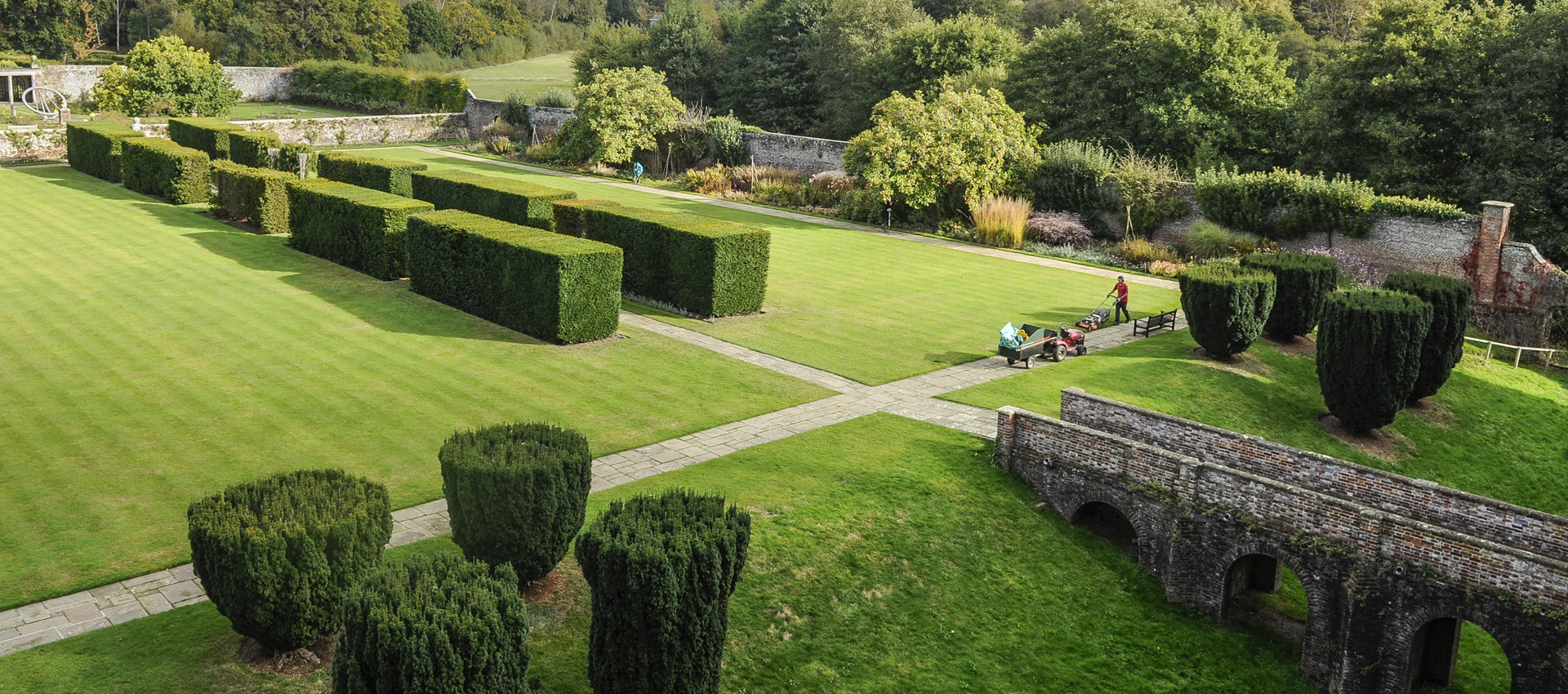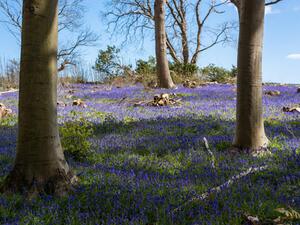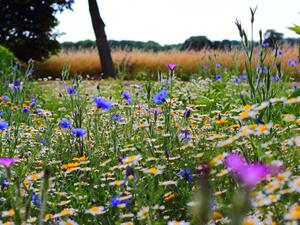Read about our Rewilding Project in the Queen's Alumni Review

Our Ethos
 We believe all aspects of our Estate's management should deliver on the 5 key pillars of sustainability as we see them:
We believe all aspects of our Estate's management should deliver on the 5 key pillars of sustainability as we see them:
- Protection, improvement and diversification of habitats and ecosystems
- An increased overall population of species diversity of flora and fauna
- The effective delivery of ecosystem services
- Creating a valuable educational resource
- Becoming a source of public interest and eco-tourism
Our Estate’s management is led through a rewilding approach where practicable, and always with conservation, diversification, and education in mind.
Woodland
 One of the key drivers in the Estate's management is nature itself. With appropriate use of grazing, thanks to our herdwick sheep, and seasonal use of Sussex rare-breed cattle for example, we aim to replicate the work of now extinct, or rare species which were once widespread throughout the UK.
One of the key drivers in the Estate's management is nature itself. With appropriate use of grazing, thanks to our herdwick sheep, and seasonal use of Sussex rare-breed cattle for example, we aim to replicate the work of now extinct, or rare species which were once widespread throughout the UK.
In an era when land management was not as commonplace, our environment was very much sculpted by such species, which happily co-existed with our native flora and fauna. By re-introducing these livestock species into our ecosystem, we expect it to subtly alter over time to replicate a mosaic of habitats which support a wide variety of species.
Our cattle help by clearing dense brambles from our woodland floor, allowing light to reach ground and increase the likelihood that new species can establish themselves and flourish. Woodland grazing increases our biodiversity even further and provides a healthy environment in which flora and fauna can thrive.
Meadowlands
 The grasslands and meadows managed by the Estate are not just beautiful to behold, but provide significant habitats, with a high level of diversity. We are fortunate to have both wildflower meadows and a water/flood meadows on the Estate.
The grasslands and meadows managed by the Estate are not just beautiful to behold, but provide significant habitats, with a high level of diversity. We are fortunate to have both wildflower meadows and a water/flood meadows on the Estate.
Our rewilding ethos means we have established a schedule of annual cutting, strewing, winter grazing and seed establishment, which preserves and enhances biodiversity in our meadows even further. Recent Wildlife Surveys in our meadows have noted an abundance of butterflies, dragonflies, bees and other insects, as well as increasingly rare orchids such as the Early Purple Orchid (Orchis mascula), and Marsh Orchids (Dactylorhiza spp.) This area is grazed by sheep in the winter to remove as much grass as possible. This gives the wildflowers the best chance to establish themselves in the spring.
The meadow is left until late summer to encourage pollinators, insects, animals and birds. Once the wild flower seed has dispersed, we will cut the meadow for hay. The best time to see the meadow is from late spring to late July.
Ponds & Water
 The four inter linking water bodies on the Estate are the Snipe Pond, Folly Pond, Red Lily Pond and the Moat. Each body flows into the other respectively from north to south through a series of sluices, cascades, or culverts. Historic England reports that the creation of the ponds may have been linked to the creation of the bricks for the construction of Herstmonceux Castle, but also as a source of fish for the Estate.
The four inter linking water bodies on the Estate are the Snipe Pond, Folly Pond, Red Lily Pond and the Moat. Each body flows into the other respectively from north to south through a series of sluices, cascades, or culverts. Historic England reports that the creation of the ponds may have been linked to the creation of the bricks for the construction of Herstmonceux Castle, but also as a source of fish for the Estate.
All ponds excluding the Moat are designated Sites of Special Scientific Interest (SSSI) due to the existence of rare fen vegetation such as Cornish moneywort, Milk parsley and Water violet. The ponds are also managed as ponds of high wildlife value. Onwards from the moat, the water feeds the Kentland Fleet becoming part of the Pevensey Levels national nature reserve and SSSI.
